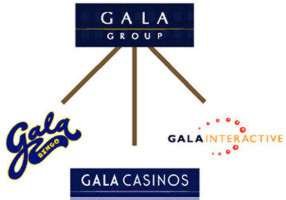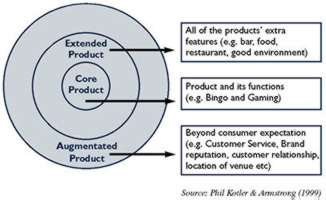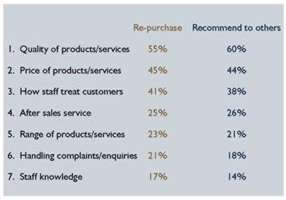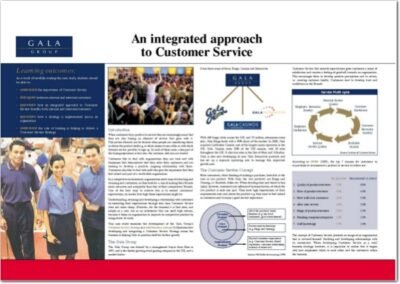
When customers buy a product or service they are increasingly aware that they are also buying an element of service that goes with it. This service element can be decisive when people are considering where to obtain the product itself e.g. at which cinema to see a film or with which Internet service provider to sign up. In each of these cases, a key part of the buying experience is how you, the customer, feel you are treated.
Customers like to deal with organisations they can trust and with businesses that demonstrate that they value their customers and are looking to develop a positive, ongoing relationship with them. Customers also like to deal with staff who give the impression that they feel valued and part of a worthwhile organisation.
In a competitive environment, organisations need ways of attracting and retaining new customers, so they look for a way of making their Brands more attractive and acceptable than that of their competitors’ Brands.
One of the best ways to achieve this is to exceed customers’ expectations, no matter how high those expectations might be.
Understanding, retaining and developing a relationship with customers by exceeding their expectations through first class Customer Service does not come cheap. However, for the business, it is best seen, not simply as a cost, but as an investment that can yield high returns, because it helps an organisation to improve its competitive position by rising above its rivals.
This case study examines the development of the Gala Group’s Customer Service Strategy as a total business concept. It illustrates how developing and integrating a Customer Service Strategy across the business is helping Gala to position itself for further growth.
The Gala Group
The Gala Group was formed by a management buy-in from Bass in 1997, and is the fastest growing retail gaming company in the UK, and a market leader.
It has three areas of focus: Bingo, Casinos and Interactive.

With 166 bingo clubs across the UK, and 33 million admissions every year, Gala Bingo leads with a 40% share of the market. In 2000, Gala acquired Ladbrokes Casinos, one of the largest casino operators in the UK. Gala owns 28 casinos, with 26 sites throughout the UK. It also has sites in the Isle of Man and Gibraltar. Gala is also now developing its own Gala Interactive products and has set up a separate operating arm to manage this important growth area.
The Customer Service Concept
Most consumers, when thinking of making a purchase, look first at the core or raw product. With Gala, the ‘raw products’ are Bingo and Gaming, i.e. Roulette, Poker etc. When deciding what and where to buy (play), however, consumers are influenced by many factors, of which the raw product is only one part. They have high expectations of their requirements over and above the product e.g. they want to feel valued as customers and to enjoy a good service experience.

Customer Service that exceeds expectations gives customers a sense of satisfaction and creates a feeling of goodwill towards an organisation. This encourages them to develop positive perceptions and to return, i.e. creating customer loyalty. Customers start to develop trust and confidence in the Brands.

According to MORI (1999), the top 7 reasons for customers to re-purchase or recommend a product or service to others are:

The concept of Customer Service presents an image of an organisation that is outward-focused (building and developing relationships with its customers). When developing Customer Service as a total business strategy, however, it is important to realise that it begins with how employees relate to each other and the customers within the business.
As part of a total Customer Service Strategy, Gala sees its own employees as internal customers. If internal customers are to provide external customers with good Customer Service, then they (Gala employees) themselves need to provide everybody they come across with good internal Customer Service and also feel that they are well treated in return.
This idea is particularly important for the Gala Group, which has developed an integrated strategy that has linked its external focus upon customers with the notion of being regarded by its own employees as a good employer.
In the same way that the Gala Group wants to retain its external customers and encourage them to come back and enjoy the products on offer more often, it also wants to recruit, motivate and retain good staff. This involves providing training opportunities and job satisfaction for employees.
Customer Service
Organisations that provide good quality Customer Service have several key characteristics. They:
- know where they are heading (clear vision of the future)
- have an ongoing dialogue with both internal and external customers
- operate a supportive management style that focuses on communicating with and motivating employees
- provide sufficient and appropriate training and development for its employees.
The challenge for the Gala Group was to:
- reinforce Gala Brands on customers’ consciousness and then work hard to keep the top slot
- provide quality service to employees within the company, and then look to them to provide a high quality service to customers
- recognise that customers’ expectations are continually rising, and respond by continually working towards higher service levels
- use Customer Service as a total business strategy to meet Gala Group’s corporate objectives
- develop future strategies that help to provide high quality Customer Service e.g. employee recognition schemes, customer care training and performance management
- link Customer Service activities within all aspects across the business.

The starting point for any long-term business strategy is some form of research. Gala needed to discover more about sources of customer and employee satisfaction and dissatisfaction, and identify elements that needed tackling as top priorities. Gala decided to adopt an integrated approach to this research, looking into both customer and employee needs.
Initially both the customer and employee research involved using workshops (focus groups) to find out more about the needs of each group. These workshops provided qualitative feedback, identifying a range of views and issues related to Customer Service. 400 face-to-face interviews were also conducted with customers and these are being followed with more than 19,200 quantitative interviews conducted annually with Gala customers to provide raw data for analysis on a unit by unit basis. At the same time more than 10,000 Gala employees were surveyed to provide quantitative data on their views of the company.
Developing an integrated Customer Service Strategy
One key element for Gala in developing an integrated strategy was to create trust and confidence at all levels. Customers need to trust and feel confident about the organisation from which they are purchasing. Similarly, employees need to trust senior managers and to have confidence in their actions. In order to support a Customer Service Strategy, Gala has also:
- established service standards for each division of the company
- launched an induction pack across both divisions
- linked customer care training across the organisation
- introduced ‘Valuing our People’ initiatives within its Casino Division
- established ‘Gala Difference’ people initiatives within its Bingo Division.
Customer Service is not a one-off activity. It is a process of continuous improvement, from which feedback from employees and customers is used to:
- measure progress made
- take further steps that generate yet more improvements.
To support this process, Gala is involving both employees and customers. For example, customer dialogue activities being included are:
- setting up a database for recording customer complaints and compliments
- creating customer feedback mechanisms, such as comment cards
- developing a customer satisfaction survey that is undertaken on a regular basis.

Talking to employees involves:
- developing a regular employee survey process
- creating ideas/suggestions schemes
- introducing a variety of employee recognition schemes.
Recruitment selection and training
Customer Service and the quality it provides starts from having the right people and then developing a process that values and nurtures their talents. A key element in the Customer Service Strategy is to select, develop and retain staff who have the expertise and professionalism to represent all levels within the organisation.
Gala has developed a range of programmes for all levels of management who are commercially aware and self-motivated. It also offers a clear career development programme to provide opportunities for advancement.
Exceeding employee expectations as a good employer has been a key element in the Customer Service process. Training across the business plays a key role in helping people to understand how to develop Customer Service skills. Even though Gala has achieved the ‘Investor in People’ Award, it was evident from the outset that Gala needed to invest even more in training and developing its staff. As staff develop, their competence in Customer Service also improves.
Gala has gone about this in two ways: firstly in establishing a specific I.T Training function to look into and develop appropriate training technologies so that a ‘blended’ approach to training is achieved. Secondly, by creating four ‘Learning Centres’ in the UK, where a range of learning and development activities will be undertaken. These are clear symbols of the investment and belief that Gala has in the value of training.

Conclusion

Offering a good service experience to customers involves taking into account not just the needs of external customers but also internal customers as part of a focused and integrated Customer Service Strategy. This case study illustrates how the Gala Group has initiated a continuous Customer Service Strategy designed to help it maintain its leading position in a fast changing industry.
 An integrated approach to Customer Service (PDF)
An integrated approach to Customer Service (PDF) 